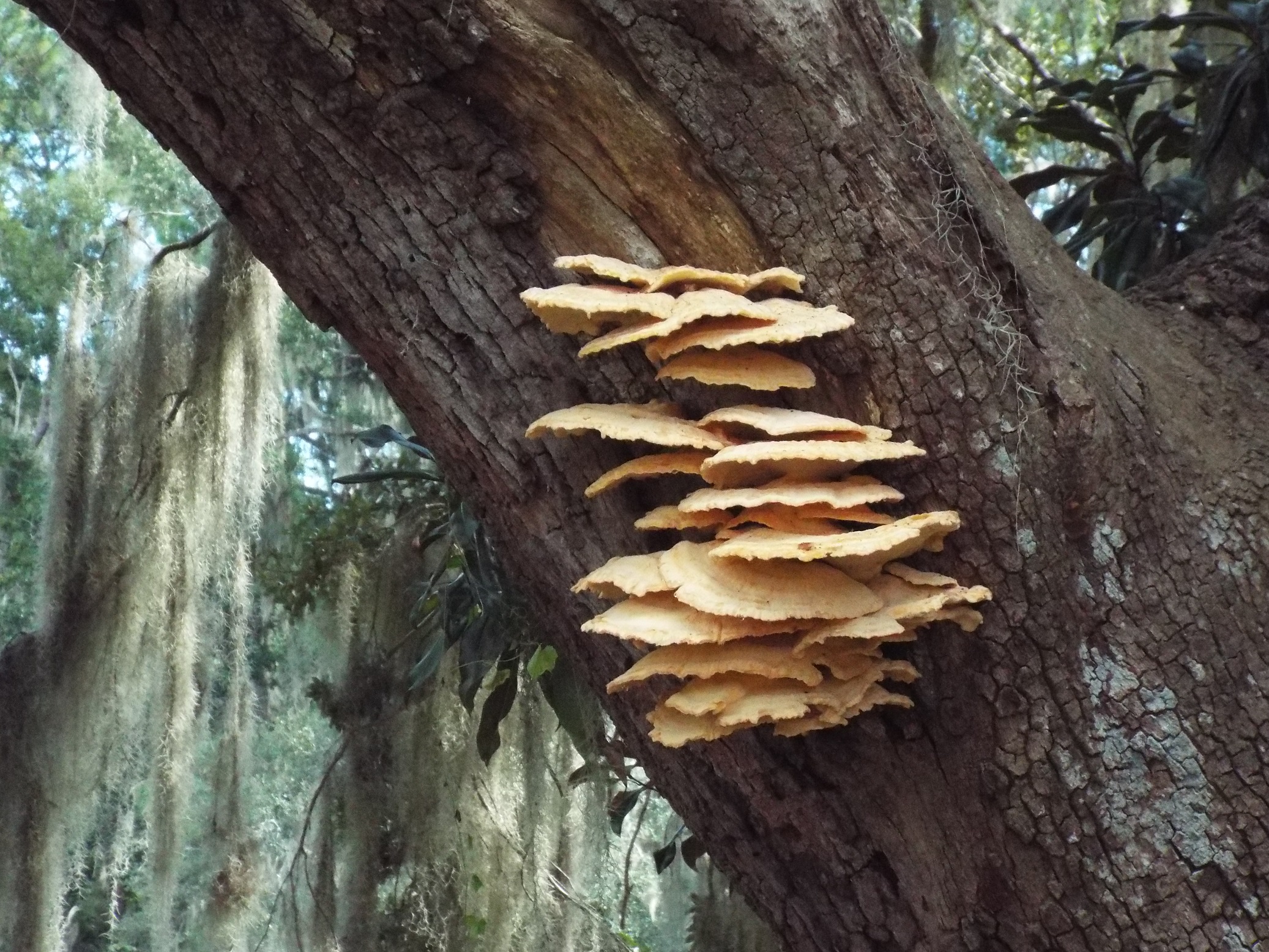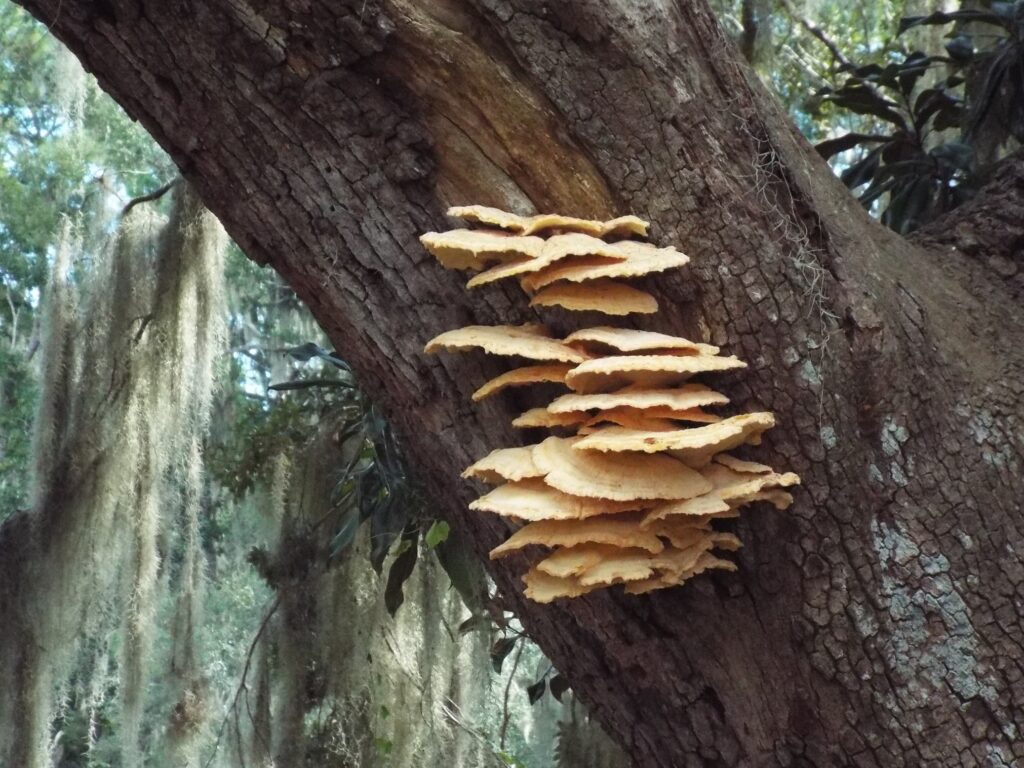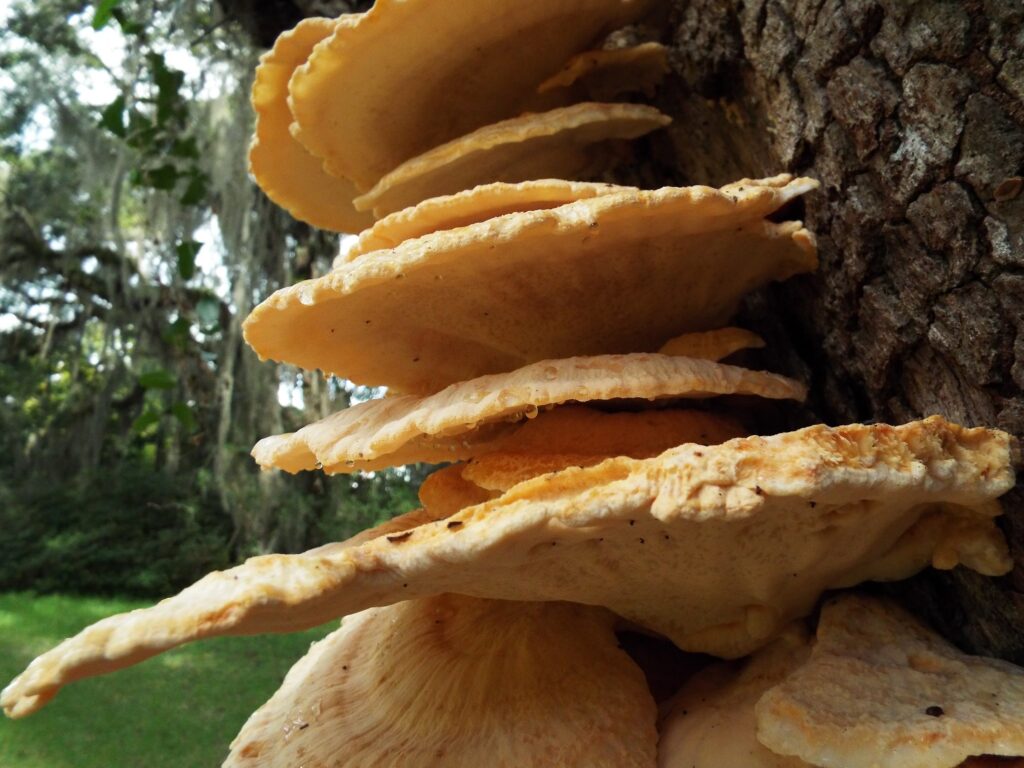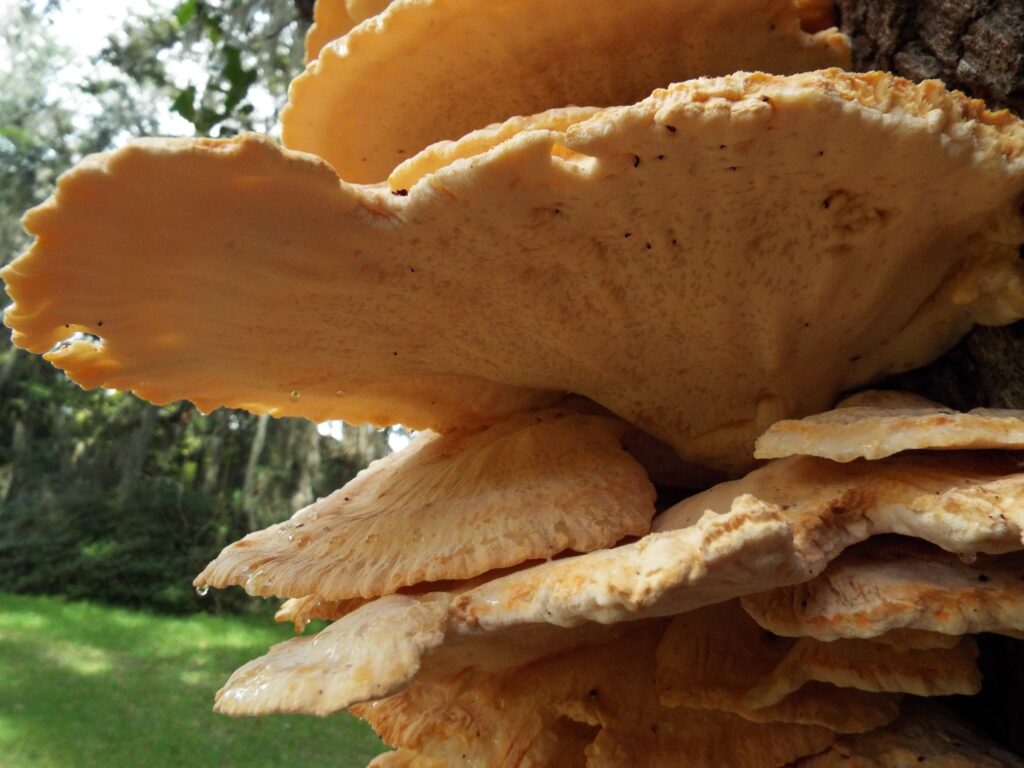



This week for Flora and Fauna Friday, I have a hearty, hardwood-hungry, multi-layered mushroom for us to discover: Chicken-of-the-woods, Genus Laetiporus spp.
We have a few species of Laetiporus here in the Lowcountry. They all share a similar shape, stacks of irregularly swollen shelves, and have a dense, fibrous flesh. Each of our local species differ in color and location where they appear. Laetiporus persicinus is a rosy-brown and found above the soil at the base of a tree as a circular rosette of shelves. Laetiporus cincinnatus is a creamy-orange and also found at the base of trees. It’s seen as either a rosette or stack of shelves. Laetiporus sulphureus is a fiery blend of pastel-yellow and tangerine-orange and found growing out of tree trunks in stacked shelves. Laetiporus gilbertsonii var. pallidus is cream-colored with a soft wash of orange and most often found growing stacked out of cracks in Oak trunks. The name “Chicken of the Woods” applies generically to all these species but is most often assigned to L. sulphureus. I most commonly see L. gilbertsonii var. pallidus around Edisto, especially on the scars of grand Live Oaks.
All species of Chicken-of-the-woods are edible and get their common name from their flavor and utility as a chicken substitute. However, some people are intolerant of certain chemicals found in these mushrooms. So snack with caution and, as with all mushrooms, don’t eat anything you aren’t 100% sure on what it is.
Chicken-of-the-woods are fungi that infect Oak trees. They feed on the dead wood of Oaks. Often they’re found feeding on tree stumps, snags, and fallen logs. However, if an Oak has trunk damage, say from a lightning strike or wind-split trunk, the fungus can enter the roots through the soil and parasitize the tree. From the roots it will grow throughout the trunk. After many years of growing invisibly, the mushrooms will appear. What was first a polyp of orangey-foam soon blooms into a flush of large fleshy mushrooms. Dozens of eight to twelve inch shelves can stack atop each other seemingly out of nowhere. These ‘shrooms can hang around for months and may return year after year if conditions are right. These fungi do harm their host tree but, once the mushrooms appear, it’s generally too late to do anything for the tree.